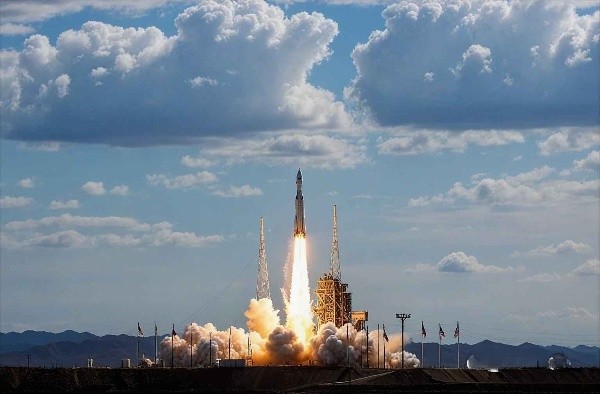Iran’s Plan to Strike Back Against the U.S.
Iran’s Military Preparations Following U.S. Attacks
Loading...

Tehran says its satellite launches are civilian in nature but the West warns the technology can be used for ballistic missiles.
Iran has made significant strides in its aerospace program with the successful launch of the Chamran-1 research satellite. This development comes amidst ongoing tensions with Western nations, which have expressed concerns over the potential military applications of Iran's satellite technology.
Details of the Launch
On Saturday, Iranian state media reported that the Chamran-1 satellite, weighing 60 kilograms (132 pounds), was successfully placed into orbit. The primary objective of this satellite is to test hardware and software systems that demonstrate orbital maneuvering technology. The launch was executed using the Ghaem-100 carrier rocket, which is notable for being Iran's first three-stage, solid-fuel satellite launcher. This rocket has previously been used to send a satellite into an orbit exceeding 500 kilometers (310 miles) in January.
Following the launch, the first signals from Chamran-1 were reportedly received, marking a successful milestone for Iran's aerospace ambitions.
Western Concerns and Iran's Position
Despite Iran's assertions that its satellite launches are purely civilian, Western governments remain skeptical. They warn that the technology used in these launches could easily be adapted for ballistic missiles, including those capable of delivering nuclear warheads. Iran has consistently denied any intentions of developing nuclear weapons, claiming that its aerospace activities are intended for peaceful and defensive purposes.
This launch occurs against a backdrop of accusations from the United States and European nations, which allege that Iran has been supplying ballistic missiles to Russia for use in the ongoing conflict in Ukraine. Iran has refuted these claims, maintaining that its military collaborations are not aimed at escalating tensions in the region.
Advancements in Aerospace Activities
Iran has been actively pursuing advancements in its aerospace capabilities, emphasizing that these efforts align with United Nations Security Council resolutions. However, the country has faced challenges, including several failed satellite launches in the past. For instance, earlier this year, Iranian media reported the successful launch of the Sorayya satellite into a 750-kilometer (465-mile) orbit, marking a significant achievement for the nation.
In February, Russia also launched an Iranian remote sensing and imaging satellite, which drew condemnation from the United States, further complicating Iran's international relations.
Impact of Sanctions
Iran's aerospace program has been significantly affected by years of stringent Western sanctions, particularly following the U.S. withdrawal from the nuclear deal in 2018 under former President Donald Trump. These sanctions have hampered Iran's economic growth and technological development, yet the country continues to push forward with its satellite and missile programs, viewing them as essential to its national security and technological independence.
Conclusion
The launch of the Chamran-1 satellite underscores Iran's determination to advance its aerospace capabilities despite international scrutiny and sanctions. While Iran insists that its activities are peaceful, the dual-use nature of the technology involved raises concerns among Western nations, highlighting the ongoing geopolitical tensions surrounding Iran's military and technological ambitions. As Iran continues to develop its aerospace program, the implications for regional and global security remain a critical point of contention.
Editor
Iran’s Military Preparations Following U.S. Attacks
Troops remain in five strategic locations, raising fears of renewed tensions and long-term occupation.
Opposition forces have taken control of the capital after a significant offensive. Here is how it unravelled.
